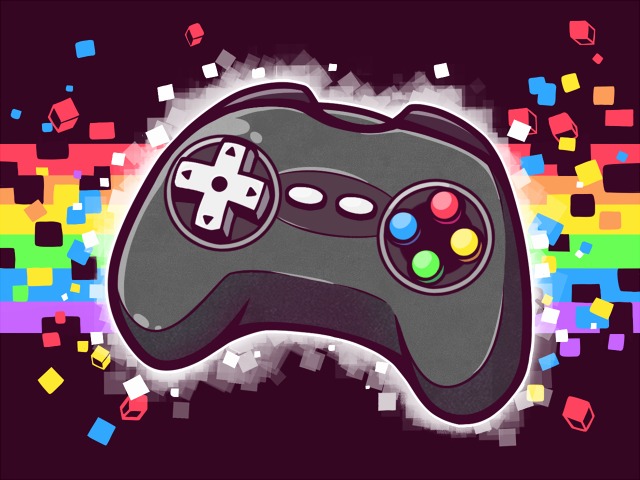It’s a wonderful thing, seeing a studio try something new.
Experimenting with different genres can sometimes be hit or miss, but it’s precisely this type of risk-taking and innovation that leads to the creation of amazing adventures like Child of Light, and we take our hats off to Ubisoft for publishing something so new and fresh.
Child of Light springs to life right from the start, and boy what a beautiful life it is. Developed by Ubisoft Montreal - who also happen to have developed the far different, but equally as good Far Cry 3 and Assassin’s Creed IV - Child of Light feels just as much a piece of art as it does a videogame, with wondrous music that sets the tone from start to finish, coupled with a hand-painted world that portrays the mysterious locations of Lemuria to great effect.
Created with Ubisoft’s UbiArt engine - last seen in Rayman Legends - the hand-drawn aesthetic in Child of Light comes to life in a refreshing new way that really manages to get the whole “in another world” message across. From the silhouettes of towering trees to the gigantic and dark mountains in the distance, each frame in Child of Light looks like a playable work of art on its own.
The story follows a young and mischievous red-haired princess named Aurora, who falls into a deep and dark slumber. Most people think Aurora is dead; however, her spirit is awake in a new mystical world called Lemuria, where she is given the task of finding the lost sun and moon so that she can go back to her mourning father (the King) in her own world. The story sounds like a child’s bedtime story, and while it’s charming enough, we would be lying if we said it gets more complex as you play.
Child of Light may look like a side-scrolling platformer, but it has all the features that you would traditionally associate with an RPG. Exploration and puzzles play a large role in Child of Light, as well as a well thought-out and effective combat system which sees the developer taking the “easy to learn, hard to master” route, something that we always appreciate in these types of games.
During combat, small icons that indicate when you or your opponent can act shift along a bar, shown at the bottom of the screen. When your icon hits the smaller “CAST” section, you may select an action for your character to carry out. Hitting an enemy who is busy winding up for a brutal attack will interrupt them and cancel their move, as well as send their icon further back along the action timeline. This means that you’ll have to plan ahead and look for gaps where you can interrupt the enemy, aiming to gain an advantage whilst preventing your opponent from doing the same. A small blue ball of light named Igniculus also plays a role in battle, and has the ability to either slow enemies down or heal allies (depending on where he is placed during combat) as well as pick up vital health and mana orbs. Igniculus can be controlled by a second player if you happen to be looking for a co-op experience, but remains perfectly manageable for solo players. The battle system overall is simple but rewarding, and can often leave you feeling like a tactical mastermind.
Outside of combat, you’ll spend your time flying around Lemuria exploring all it has to offer - which is quite a lot, if you put the size and scope of Child of Light into perspective. There’s a plethora of mini-bosses, various rewarding puzzles and side-quests to be found, all of which often reward the player with neat collectibles and items for their efforts.
Equipable items in Child of Light go by the name of Oculi and resemble gemstones of different color and quality. Equipping these gems provides you with different stat bonuses that can assist your efforts during battle (adding elemental damage, increasing max HP, etc). Up to 3 of these gems can be equipped by each character, and each slot modifies the effect of the individual gemstone. Oculi can also be crafted, if exploration isn’t really your thing. Runes can also be found throughout Lemuria, serving as another way of increasing character stats. With the Oculi, Runes and a pretty extensive Skill Tree for Aurora to be progressed through as you level up - as well as a number of companions to be found along the way, it is safe to say that there’s plenty of room for strategic customization.
Our time in Lemuria was fairly brief, with our playthrough clocking in at about 10 hours. However, this didn’t bother us at all; in fact, more time in Child of Light may have spoiled its lasting appeal. Child of Light is a work of art (literally) and a pleasure to play, and not once did we find ourselves frustrated or bored - something which can often be the case with RPGs nowadays, with their lore-heavy exposition dumps, extensive menus and hard-to-learn game mechanics. Thankfully, Child of Light is different. It’s simple and beautiful, a refreshing change and a welcome experience. That said, I can see how Child of Light may not appeal to players looking for a more hardcore and immersive experience.
Take up the opportunity to immerse yourself in its world, however, and Lemuria won’t disappoint. It’s a wonderfully-crafted gem of a game which delights right from the opening moments to the time the end credits roll.



